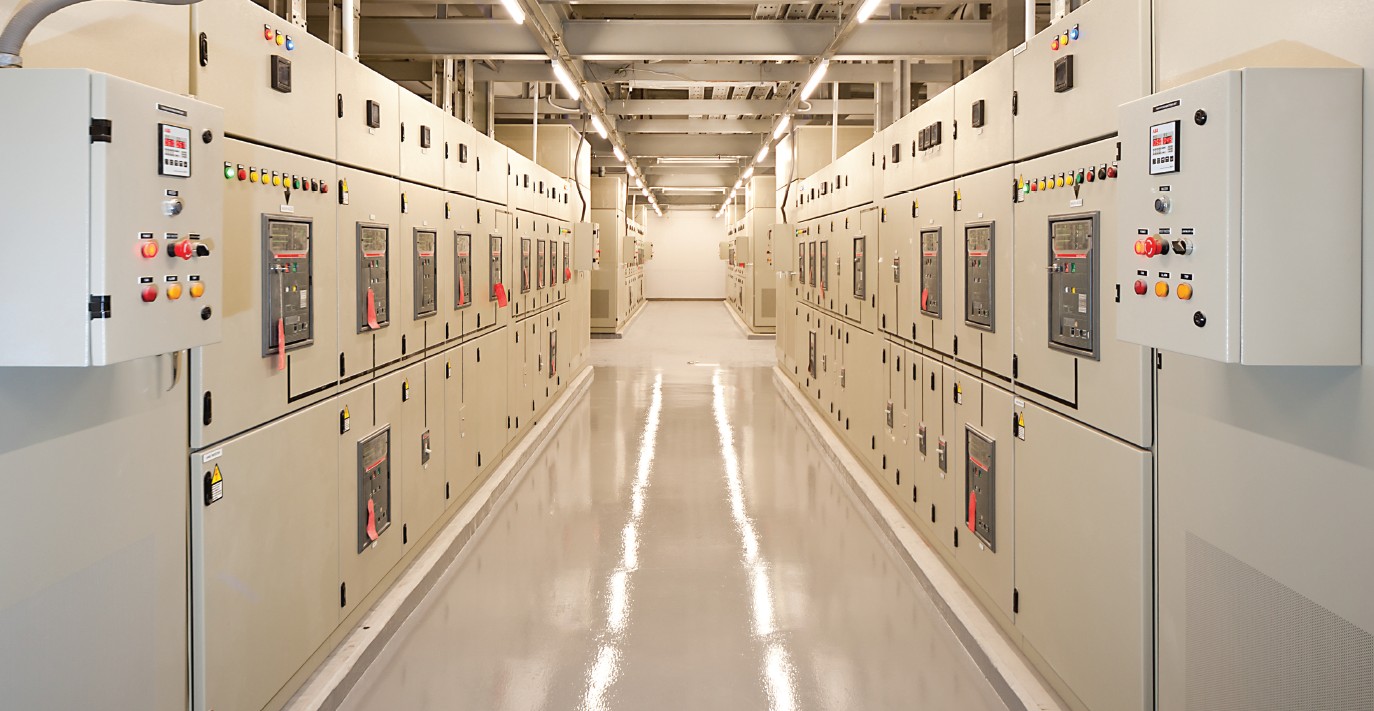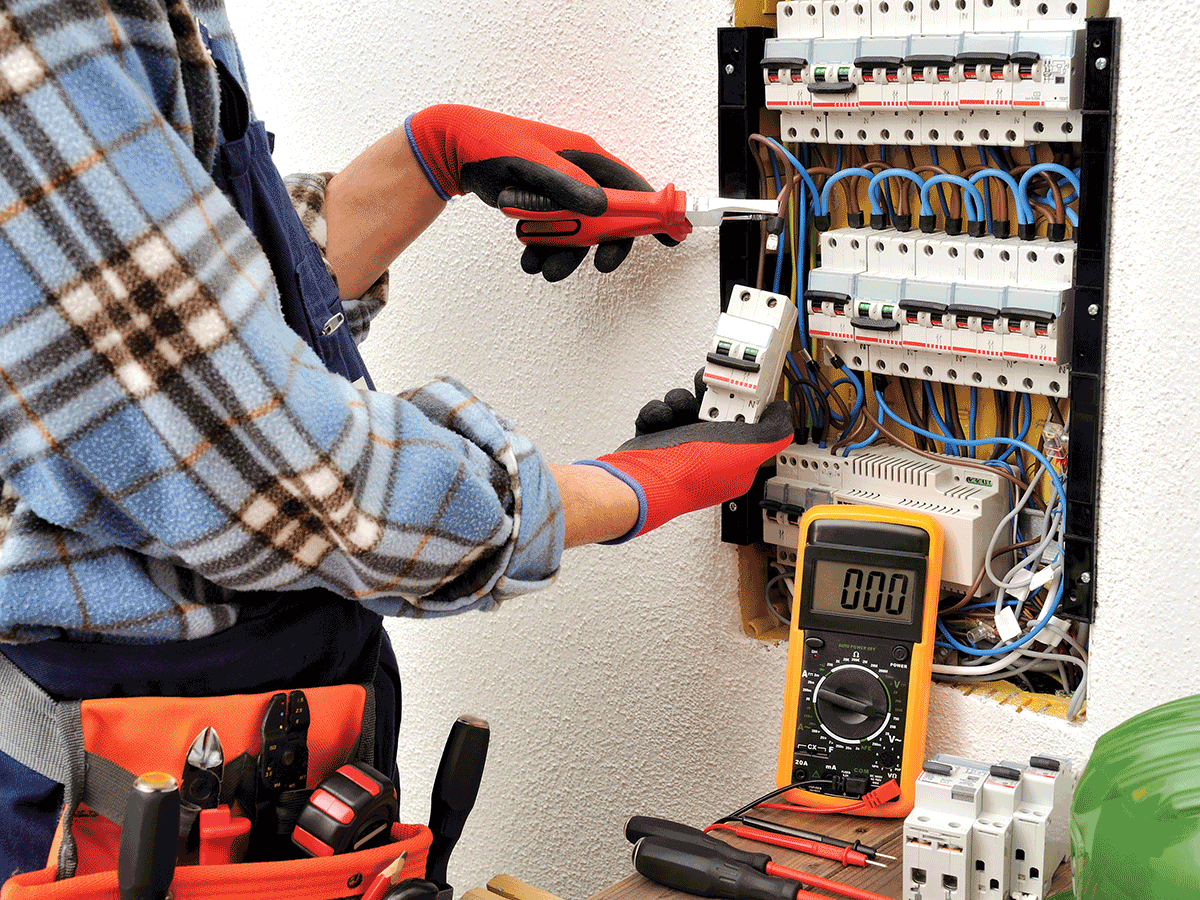Electrical distribution systems serve us on a daily basis whether we are sitting in our home, driving down the road or at work. This important infrastructure must be maintained, if not for longevity sake, for safety sake. Maintenance is a part of each of our lives in many aspects. One good example is the automobile. We invest in vehicle maintenance not only to ensure it lasts, but we don’t want to be running down the road listening to tunes on the radio and find that we need our brakes to avoid a hazard, and they are not functional because we didn’t address worn brake pads or low brake fluid. The electrical distribution system is, unfortunately, not thought of in the same manner and all too often doesn’t receive the attention it deserves to perform reliably over the life of the facility it serves. A good friend of mine calls me now and then and begins his dialog with, “Thomas, there are opportunities all around us…” Maintenance is one of those opportunities that can increase safety in our industry.
When I first started with Eaton back in the mid-90s, I worked on a help desk taking phone calls and supporting our electrical equipment, such as circuit breakers, communication systems, programmable logical controllers and more. One day I received a call about our IQ 1000 II motor protection relay. The caller on the other end of the phone asked for my assistance in disabling the motor ground fault protection. After a general overview of the product and the purpose of ground fault protection on a motor circuit, the customer insisted on a way to turn the protection to the off position. In that relay at that time, the best way to defeat ground fault protection was to increase the setting to a much higher value, which was already performed by the customer resulting in a device that still tripped on ground fault. At some point late in the call, it was finally revealed that the reason he wanted to turn ground fault off was because he wanted to burn up the cable and the motor so he could replace them. I was advised that this was a salt mine and over time in salt mines you get a buildup of salt on motor terminals and electrical equipment which will cause ground faults to flow. In this particular salt mine, they did not have a budget to maintain their electrical equipment, but they did have a budget to replace damaged electrical equipment. When I hung up that phone, I chuckled and told that story to the other guys on the team. In reality, there is no humor in that situation nor any other that puts individuals in a position to work in and around electrical equipment that is not properly maintained.
Maintenance and the NEC
The Purpose of the NEC is the “practical safeguarding of persons and property from the hazards due to use of electricity.” Section 90.1(B) speaks to the fact that the NEC contains provisions that are necessary for safety. This section of the Code specifically states that it is not only important to comply with the Code, it is also important to perform proper maintenance: “Compliance therewith and proper maintenance results in an installation that is essentially free from hazard but not necessarily efficient, convenient, or adequate for good service or future expansion of electrical use.” Electrical equipment will perform as expected when installed correctly and maintained over its life.
The NEC has provisions to help those who are performing maintenance on electrical equipment. The following sections are examples of this:
26, Spaces About Electrical Equipment
32, Work Space About Equipment
34, Work Space and Guarding
76, Access to Vaults and Tunnels
In addition to these and other provisions in the NEC that recognize maintenance will occur on the electrical system and that it should be able to be performed safely, there are also exceptions to requirements where maintenance programs exist. Let’s look in Article 210 dealing with branch circuits for an example. In this Article, Section 210.3 speaks to branch circuit rating. The rule states, “Branch circuits recognized by this article shall be rated in accordance with the maximum permitted ampere rating or setting of the overcurrent device. The rating for other than individual branch circuits shall be 15, 20, 30, 40, and 50 amperes. Where conductors of higher ampacity are used for any reason, the ampere rating or setting of the specified overcurrent device shall determine the circuit rating.” The exception to this rule states, “Multioutlet branch circuits greater than 50 amperes shall be permitted to supply nonlighting outlet loads on industrial premises where conditions of maintenance and supervision ensure that only qualified persons service the equipment.” The presence of a maintenance program and qualified persons are needed over the life of the structure. At the time of installation, the presence of a maintenance program with qualified personnel may exist but may not be there over the life of the structure. The ramification of leveraging these types of exceptions which rely on maintenance programs with qualified individuals over the life of the structure is important to understand.
Equipment Maintenance
Motors, generators, and other similar equipment have rotating parts and drive other equipment through the use of bearings and similar mechanical interfaces. Maintenance or the lack thereof for this type of equipment is pretty clear as to possible negative impacts. However, other equipment like panelboards, switchboards, circuit breakers and GFCI type of devices may be a little less obvious. After all, what type of maintenance could you possibly do to a device that you cannot open without voiding its UL listing? The fact is that maintenance does not always include disassembly, inspection, component replacement, and reassembly. Often this cannot be performed on electrical components. Electrical equipment manufacturer maintenance recommendations should always be consulted just like you would for your automobile, lawnmower, HVAC, and other similar equipment in and around the house. The performance of such products as circuit breakers and GFCI receptacles and safety-related electrical equipment will rely on proper maintenance and review over the service life of these products. We cannot expect an electrical component to act as designed when called upon years after its installation if we never performed maintenance as required by the manufacturer’s instructions.
Maintenance on an electrical system could and should include updating systems analysis studies and review of existing equipment with regard to ratings such as short-circuit current ratings, interrupting ratings, voltage ratings and more. Distribution systems change over time and can be exposed to elements that could leave an electrical product in need of attention for many different reasons. A good maintenance program can go a long way to ensuring proper system operation.
The Maintenance Program
A maintenance program for any facility does not come free but will cost much less than repairing the problems that may result due to not performing regular maintenance. The program can only be successful when supported by the top levels of management within the organization as it will demand an allocation of resources and funding.
To understand costs, let’s use a standard pickup truck as an example. Let’s say we purchased a brand new truck for $31,106 and took it home for basic general use. Over the first five years of ownership, experts tell us that we will spend approximately $4,562 in maintenance and $1,073 in general repairs. Over those five years, we spent approximately 18% of what we paid for the vehicle to keep it on the road and doing what we need it to do. Let’s say we do not invest in the proper maintenance of this vehicle. I’ve never tested it, but I cannot imagine it would take a long time for an engine without proper fluid changes to stop functioning. I do know that the consequences of not making this investment in a vehicle will come in the form of a much higher cost than what it would have been if we did make the proper fluid changes. After doing a little research, I found that if I were not to replace the oil in my engine and perform other regular fluid changes, replacing the engine on my pickup could be upwards of $7,500. This cost is more than what the five years of maintenance would have cost to avoid this replacement. The other consideration is the cost to get done what we purchased the vehicle to do for us in the first place or the cost to get home when it dies on the road somewhere. That may be taxi rides, rentals, and other solutions. One more consideration is whether or not our lack of maintenance on this vehicle will cause safety concerns and put us and others we are transporting, or who are on the same road, in harm’s way.
Electrical distribution systems are similar to this example. The major difference is that no one expects his or her pickup truck to run forever without changing the oil, transmission fluid, and changing a belt or brake pad now and then. Electrical distribution systems are all too often expected to run continuously without maintenance. A maintenance program is a necessity, and management must fund and support it to be successful. From a facility perspective, lack of maintenance could mean unplanned downtime. It could mean lives are at risk. Here are key areas to explore early in the stages of developing a maintenance plan:
- Safety for Personnel. Should the electrical distribution system fail or break down, we have to consider the impact on the safety of those working in the facility:
a. Incident energy: Those within the arc flash boundary can be exposed to high levels of incident energy should a failure occur in the distribution system.
b. Shock: Safety hazards that leave energized conductors or equipment exposed can present shock hazards that can be deadly.
c. Process: A process that is interrupted may present a hazardous location within the facility and impact many individuals at the same time.
- Cost of Downtime. The cost of downtime will either be a hard cost that is measurable or a soft cost like productivity which is harder to quantify. For manufacturing facilities, downtime is usually easy to pinpoint. For example, in the petrochemical world, unplanned outages can cost millions of dollars due to lost production. The average cost of downtime, equipment damage and lost productivity could be as high as $700K an hour. A 100 MW petrochemical plant produces approximately $2 billion per year in revenues — or $228,000 per hour. With an average of 8 hours of downtime per year, an average 100 MW plant will lose over $1.8 million in revenue annually to electrical system outages. Downtime costs for the automotive industry, on average, are approximately $22k/minute. In March 2005, a survey of 101 manufacturing executives in the automotive industry was performed, and a majority of those surveyed said that the cost of stopped production is on average $22,000 per minute.
- Equipment and System Needs. Let’s suppose that the vehicle we purchased in the above example was a special truck that is made to carry a specific product from our manufacturing facility to our end customers. Let’s say that it was specially made and took one year to get it from the manufacturer. When it fails due to our lack of maintenance it may take one year to get another; and for that period, we are not shipping product. The cost of lost customers and lack of sales would be devastating. The same goes for electrical distribution or controls equipment in a facility. Repairs can be more expensive for some equipment than for others. If you have to replace specialized equipment, planned replacements are best.
When laying out your electrical maintenance program for your facility or your customer, it must include understanding the needs of each facility’s distribution system and equipment as every system will be different:
- Physical footprint: The square footage of a facility will impact the cost and nature of the maintenance program. Not every facility is the same.
- Business operation: The type of facility will also impact the maintenance program. A program for an office building will be much different and less costly than that for a petrochemical facility.
- Type of equipment: The type of equipment within the facility will be driven by the type of business operation but will command special needs and consideration. An inventory of specialized equipment and general equipment is important.
Parting Remarks
Maintenance of an electrical distribution system is important whether you are in a residential environment or a heavy industrial. The design engineer, electrical contractor, owner, and inspector all play an important role in this picture. Justifying maintenance on electrical distribution systems just takes a little effort around education to understand not only the value but the importance to safe operation.
As always, keep safety at the top of your list, and ensure you and those around you live to see another day.











Find Us on Socials